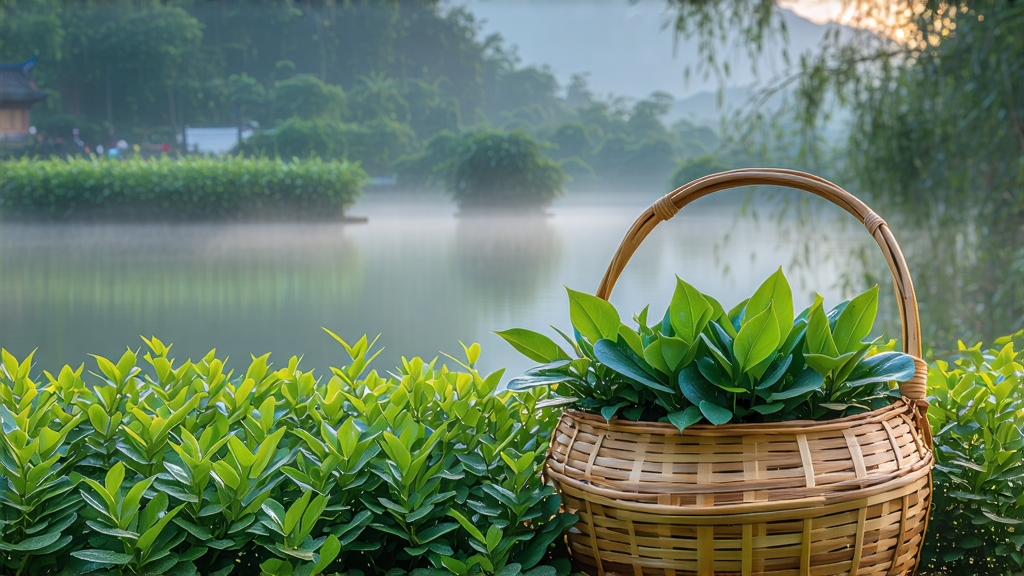
Longjing, literally “Dragon-Well,” is more than a tea; it is a liquid manuscript of Chinese history, geography and aesthetics. First praised in Tang dynasty poems and later canonized by Qing emperors who stationed guards around the eighteen mother trees of Lion Peak, this flat, jade-green leaf has become the benchmark against which all Chinese green teas are measured. Yet outside China it is still misunderstood—often reduced to a generic “green” flavor or confused with Japanese sencha. This essay invites the international reader to step into the micro-world of Longjing: its 1,500-year journey from Buddhist monastery gardens to global auction catalogs, the subtle differences among its five core sub-regions, the hand-wok choreography that fixes its fragrance, and the quiet ritual that coaxes its nut-sweet aroma into a glass of pale gold.
-
Historical vignettes
In 250 CE, the monk Baochu is said to have dug a well on Lion Peak whose water resembled a coiled dragon; tea planted nearby absorbed the legend. By the Song era (960-1279) the leaves were pressed into cakes for tribute, but when the Hongwu Emperor banned compressed tea in 1391, loose-leaf Longjing flourished. Qianlong’s 18th-century tour of West Lake sealed its fame: the emperor allegedly pocketed freshly plucked shoots in his sleeve, returned to Beijing, and decreed the trees imperial property. During the 1972 Nixon visit, Premier Zhou Enlai served Longjing to signal diplomatic warmth; the tea became soft power in a porcelain cup. -
Terroir: five villages, five voices
Authentic West Lake Longjing (Xihu Longjing) occupies barely 1,680 hectares. Within this micro-zone, soil chemistry, altitude and mist cycles create five “crus”:
- Shífeng (Lion Peak): granite soils, highest elevation, longest lingering aftertaste, orchid nose.
- Méijiāwǔ: sandy loam, slightly higher polyphenol content, chestnut overtone.
- Wēngjiāshān: iron-rich red soil, brisk mineral bite, bright lime-colored liquor.
- Hǔpáo (Tiger Running Spring): spring water percolates through quartzite, giving a silky texture.
- Lóngjǐng Village itself: the benchmark balance of grass and bean aroma, flat tender leaves.
Beyond these, “Qiantang” and “Yuezhou” Longjing grow in neighboring provinces, offering honest green tea but lacking the quartz-mineral echo of West Lake.
-
Cultivar architecture
The traditional clone is Qunti (群体种), a seed-propagated landrace with 45 chromosomes of genetic diversity, budding between late March and mid-April. In the 1980s the Longjing #43 cultivar was released—earlier sprouting, uniform bushes, stronger resistance, but thinner texture. Modern organic gardens interplant both to hedge climate risk while preserving complexity. -
The 10-hand pan-fire: a kinetic poem
Within minutes of plucking, leaves are spread 2 cm thick on bamboo trays to lose surface moisture. Master craftsmen then wield 28-inch woks heated to 80 °C, rubbing, shaking, pressing and stacking 250 g batches for 25 minutes. The motion vocabulary is precise:- “Tāng” (grasp and fling) drives off steam;
- “Dāng” (press and slide) irons the leaf flat;
- “Tí” (lift and shake) sets the parallel ridges.
Temperature is modulated every 90 seconds; palms read the wok like a musical instrument. When moisture drops to 30 %, the “hui guo” second firing at 60 °C refines the aroma. No rolling, no steaming—just heat and muscle memory—yielding the sword-shaped leaf that snaps cleanly between fingernails.
-
Grading lexicon
Chinese buyers speak in four adjectives:- “Tender” (single bud vs. one bud-one leaf vs. one bud-two leaves).
- “Even” (uniform 2.5 cm length).
- “Flat” (no curl, no fold).
- “Smooth” (no broken tips).
Top grade “Yu Qian” (pre-Qingming) is picked before April 5, when nights remain below 12 °C, locking in 4 % amino acids and the famous sweet-savory